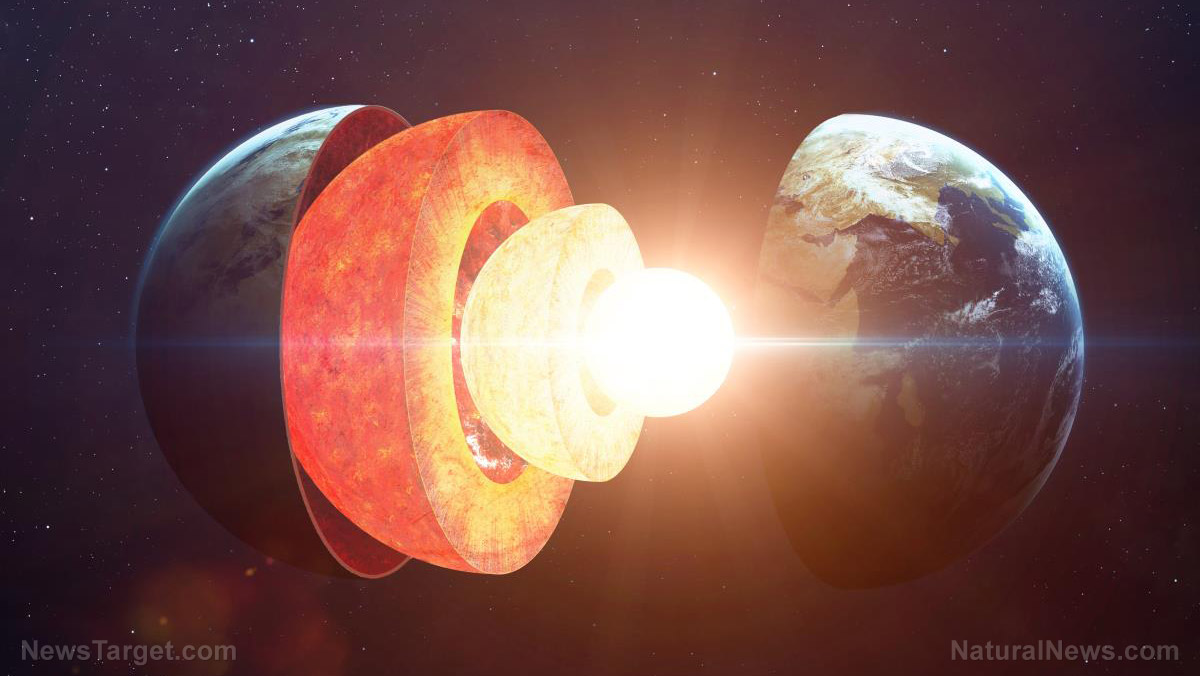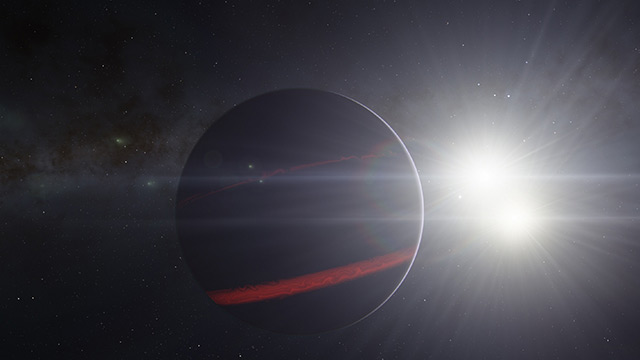New study finds cosmic shock wave 60 times larger than the Milky Way
03/02/2022 / By Kevin Hughes

A new study has found a massive shock wave that is many times larger than the Milky Way.
Abell 3667, situated about 730 million light-years from Earth, is a galaxy cluster that is in turmoil. It is made up of two clusters of galaxies that are actually crashing into each other and about 550 individual galaxies in total that are gradually moving into one huge cosmic broth. (Related: Astronomers find 1,000 mysterious filaments of radio energy blasting from center of Milky Way.)
Although it is not immediately recognizable to most telescopes, the cosmic collision has made a massive disturbance in the area, causing a gigantic shock wave that blazes out of either side of the fusing cluster and apparent only in radio wavelengths.
A new study released last February 7 in the journal Astronomy & Astrophysics provides the most accurate picture ever captured of this colossal wave.
Radio relics can be used to investigate galaxy cluster
Employing the MeerKAT radio telescope array in South Africa, the researchers imaged both halves of the shock wave’s radio component also known as “radio relics” and discovered that the structures are far more complicated than former observations recorded.
The radio relics can be used to investigate the properties of the intergalactic space within the cluster, which are called the intracluster medium and intracluster dynamics.
Abell 3667, which is relatively close to the Milky Way and also quite large, makes it a superb object 0f such investigation.
Considering that the cluster is in the southern sky, astronomers were able to watch it with one of the most sensitive radio telescopes in the world. MeerKAT is a forerunner to and pioneer for the Square Kilometer Array (SKA) that is presently being developed across Australia and South Africa to give an exceptional radio eye on the sky.
“These structures are full of surprises and much more complex than what we initially thought. The shock waves act as giant particle accelerators that accelerate electrons to speeds close to the speed of light. When these fast electrons cross a magnetic field, they emit the radio waves that we see,” said lead study author and astronomer Francesco de Gasperin of the University of Hamburg in Germany and the National Institute for Astrophysics in Italy
“The shocks are threaded by an intricate pattern of bright filaments that trace the location of giant magnetic field lines and the regions where electrons are accelerated.”
The shock wave first blasted into being about a billion years ago when the two galaxy clusters that make up Abell 3667 first collided according to the researchers.
Galaxy clusters are the most tremendous gravitational-bound formations in the universe and when two of them combine, they deliver the biggest amount of energy in a single occurrence since the Big Bang the researchers said.
They can be absolutely enormous, comprising hundreds or thousands of individual galaxies. Galaxies and galaxy clusters journey along threads of the cosmic web to cluster nodes, where they unite to form even bigger clusters.
These monumental events occur at high speeds, producing cluster-scale shock waves that spread through space also at high speeds.
Abell 3667 is still merging with other galaxies
Abell 3667 is still merging. At least 550 galaxies have already connected with it. The shock waves are spreading through it at speeds around 1,500 kilometers per second (930 miles per second).
As the wave fires electrons into space at near-lightspeed, the particles ripped through magnetic fields in the area, releasing the twin arcs of radio waves that were seen.
The researchers also discovered that the radio arcs move at more than 5.3 million kilometers per second (3.3 million miles per second) and are about 13 million lightyears apart from each other. The radio arcs each measure 60 times larger than the entire Milky Way galaxy, which stretches about 100,000 light-years in diameter.
“Our observations have unveiled the complexity of the interplay between the thermal and non-thermal components in the most active regions of a merging cluster. Both the intricate internal structure of radio relics and the direct detection of magnetic draping around the merging bullet are powerful examples of the non-trivial magnetic properties of the intracluster medium.
Thanks to its sensitivity to polarized radiation, MeerKAT will be transformational in the study of these complex phenomena,” the researchers wrote. And that is one mighty explosion and impressive view for astronomers who are sitting safely across the universe, according to one researcher.
More related stories:
Experts: Cataclysmic flare in the Milky Way felt 200,000 light-years away.
Radioactive “snowflakes” behave like small nuclear bombs in the universe.
Astronomers find 1,000 mysterious filaments of radio energy blasting from center of Milky Way.
Sun erupting non-stop this month, giant explosions seen from its far side.
Watch the video below to know how the stars and galaxies in the universe were created.
This video is from the Herewego channel on Brighteon.com.
Follow Cosmic.news for more articles like this.
Sources include:
Submit a correction >>
Tagged Under:
Abell 3667, astronomy, breakthrough, cool science, cosmic, discoveries, galaxy cluster, MeerKAT, Milky Way, radio arcs, radio relics, research, shock wave, Space
This article may contain statements that reflect the opinion of the author
RECENT NEWS & ARTICLES
COPYRIGHT © 2018 BREAKTHROUGH.NEWS
All content posted on this site is protected under Free Speech. Breakthrough.news is not responsible for content written by contributing authors. The information on this site is provided for educational and entertainment purposes only. It is not intended as a substitute for professional advice of any kind. Breakthrough.news assumes no responsibility for the use or misuse of this material. All trademarks, registered trademarks and service marks mentioned on this site are the property of their respective owners.




















